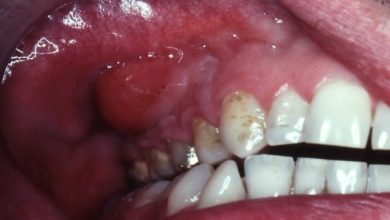General Principles & Energy Production in Medical Physiology
![The maintenance of a stable hydrogen ion concentration ([H+]) in body fluids is essential to life. The pH of a solution is defined as the logarithm to the base 10 of the reciprocal of the H+ concentration ([H+]), ie, the negative logarithm of the [H+]. The pH of water at 25 °C, in which H+ and OH– ions are present in equal numbers, is 7.0 (Figure 1–2). For each pH unit less than 7.0, the [H+] is increased tenfold; for each pH unit above 7.0, it is decreased tenfold. In the plasma of healthy individuals, pH is slightly alkaline, maintained in the narrow range of 7.35 to 7.45. Conversely, gastric fluid pH can be quite acidic (on the order of 2.0) and pancreatic secretions can be quite alkaline (on the order of 8.0). Enzymatic activity and protein structure are frequently sensitive to pH; in any given body or cellular compartment, pH is maintained to allow for maximal enzyme/protein efficiency.](https://mynewspapers.info/wp-content/uploads/2022/01/General-Principles-Energy-Production-in-Medical-Physiology.jpg)
INTRODUCTION
In unicellular organisms, all vital processes occur in a single cell. As the evolution of multicellular organisms has progressed, various cell groups organized into tissues and organs have taken over particular functions. In humans and other vertebrate animals, the specialized cell groups include a gastrointestinal system to digest and absorb food a respiratory system to take up O2 and eliminate CO2; a urinary system to remove wastes; a cardiovascular system to distribute nutrients, O2, and the products of metabolism; a reproductive system to perpetuate the species; and nervous and endocrine systems to coordinate and integrate the functions of the other systems.
Click here for more about Dianabol
This book is concerned with the way these systems function and the way each contributes to the functions of the body as a whole. In this section, general concepts and biophysical and biochemical principles that are basic to the function of all the systems are presented.Watch online movies here los movies
In the first chapter, the focus is on review of basic biophysical and biochemical principles and the introduction of the molecular building blocks that contribute to cellular physiology. In the second chapter, a review of basic cellular morphology and physiology is presented. In the third chapter, the process of immunity and inflammation, and their link to physiology, are considered
GENERAL PRINCIPLES
The cells that make up the bodies of all but the simplest multicellular animals, both aquatic and terrestrial, exist in an “internal sea” of extracellular fluid (ECF) enclosed within the integument of the animal. From this fluid, the cells take up O2 and nutrients; into it, they discharge metabolic waste products. The ECF is more dilute than present-day seawater, but its composition closely resembles that of the primordial oceans in which, presumably, all life originated.
In animals with a closed vascular system, the ECF is divided into two components: the interstitial fluid and the circulating blood plasma. The plasma and the cellular elements of the blood, principally red blood cells, fill the vascular system, and together they constitute the total blood volume.
The interstitial fluid is that part of the ECF that is outside the vascular system, bathing the cells. The special fluids considered together as transcellular fluids are discussed in the following text. About a third of the total body water is extracellular; the remaining two thirds is intracellular (intracellular fluid). In the average young adult male, 18% of the body weight is protein and related substances, 7% is mineral, and 15% is fat. The remaining 60% is water
Equivalents
The intracellular component of the body water accounts for about 40% of body weight and the extracellular component for about 20%. Approximately 25% of the extracellular component is in the vascular system (plasma = 5% of body weight) and 75% outside the blood vessels (interstitial fluid = 15% of body weight). The total blood volume is about 8% of body weight. Flow between these compartments is tightly regulated.Watch Bollywood and Hollywood Full Movies Moviesnation
UNITS FOR MEASURING CONCENTRATION OF SOLUTES
In considering the effects of various physiologically important substances and the interactions between them, the number of molecules, electric charges, or particles of a substance per unit volume of a particular body fluid are often more meaningful than simply the weight of the substance per unit volume. For this reason, physiological concentrations are frequently expressed in moles, equivalents, or osmoles
pH AND BUFFERING
The maintenance of a stable hydrogen ion concentration ([H+]) in body fluids is essential to life. The pH of a solution is defined as the logarithm to the base 10 of the reciprocal of the H+ concentration ([H+]), ie, the negative logarithm of the [H+]. The pH of water at 25 °C, in which H+ and OH– ions are present in equal numbers, is 7.0 (Figure 1–2).
For each pH unit less than 7.0, the [H+] is increased tenfold; for each pH unit above 7.0, it is decreased tenfold. In the plasma of healthy individuals, pH is slightly alkaline, maintained in the narrow range of 7.35 to 7.45. Conversely, gastric fluid pH can be quite acidic (on the order of 2.0) and pancreatic secretions can be quite alkaline (on the order of 8.0). Enzymatic activity and protein structure are frequently sensitive to pH; in any given body or cellular compartment, pH is maintained to allow for maximal enzyme/protein efficiency.




